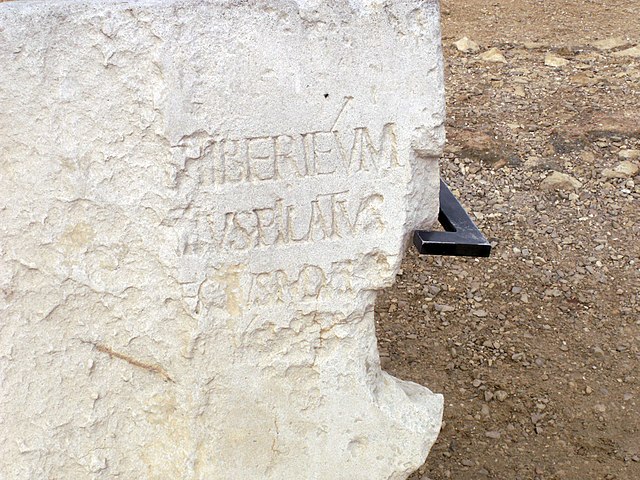The term "historical Jesus" refers to the life and teachings of Jesus as interpreted through critical historical methods, in contrast to what are traditionally religious interpretations. It also considers the historical and cultural contexts in which Jesus lived.
Virtually all scholars of antiquity accept that Jesus was a historical figure, and the idea that Jesus was a mythical figure has been consistently rejected by the scholarly consensus as a fringe theory. Scholars differ about the beliefs and teachings of Jesus as well as the accuracy of the biblical accounts, with only two events being supported by nearly universal scholarly consensus: Jesus was baptized and Jesus was crucified.
An 11th-century Byzantine manuscript containing the opening of the Gospel of Luke
Hermann Samuel Reimarus (1694–1768) studied the historical Jesus.
Albert Schweitzer, whose book coined the phrase Quest [for] the Historical Jesus
The Pilate Stone from Caesarea Maritima, now at the Israel Museum
The ministry of Jesus, in the canonical gospels, begins with his baptism near the River Jordan by John the Baptist, and ends in Jerusalem in Judea, following the Last Supper with his disciples. The Gospel of Luke states that Jesus was "about 30 years of age" at the start of his ministry. A chronology of Jesus typically sets the date of the start of his ministry at around AD 27–29 and the end in the range AD 30–36.
Vocation of the Apostles (1481) by Domenico Ghirlandaio
Marriage at Cana
Synagogue in Capernaum
First disciples and Miraculous catch of fish



![Albert Schweitzer, whose book coined the phrase Quest [for] the Historical Jesus](https://upload.wikimedia.org/wikipedia/commons/thumb/5/58/Bundesarchiv_Bild_183-D0116-0041-019%2C_Albert_Schweitzer.jpg/404px-Bundesarchiv_Bild_183-D0116-0041-019%2C_Albert_Schweitzer.jpg)




